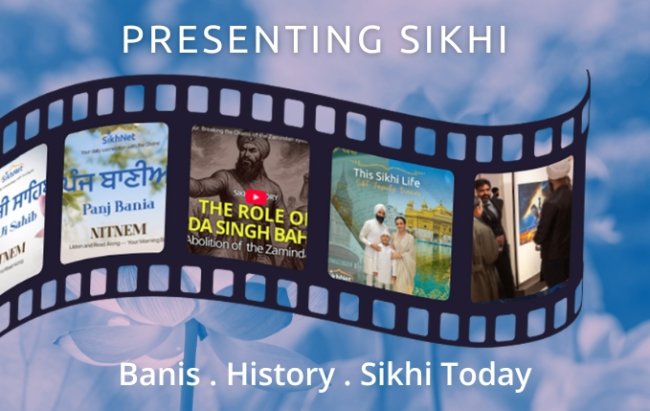Listen to audio
A couple weeks before the Rose Parade, its first Sikh-themed float was still very much under construction in a Pasadena warehouse. Rashpal Dhindsa's humanitarian group, the United Sikh Mission, is sponsoring the float and if he was nervous, it wasn't showing.
"It’s pretty good," Dhindsa said, as workers scaled the float with torches and drills. "Looks nice."
The Fontana businessman has been a fan of the Rose Parade since he moved from India in the late 80's. When he failed to get a float into the event last year — there are only 40 or so spots — he applied again this year, confident that the hundreds of thousands of Sikhs in the U.S. would benefit from representation in a New Year ritual watched by tens of millions worldwide.
"Very few people know who we are," said Dhindsa, who owns a trucking company. "We love this country. And all of us work hard to make this country strong."
He worries the public has the wrong idea about Sikhs because men wear turbans and long beards as symbols of their faith. After the Sept. 11 terrorist attacks, some Americans associated turbaned men with Al Qaeda fighters and Osama bin Laden.
Another member of the United Sikh Mission, Bhajneet Singh, recalled people yelling, 'Osama, get out of here' and 'Osama, you’re a terrorist.'
"I knew it was coming from a place of frustration of what had happened," said Singh, 33, of La Cañada Flintridge. "I was frustrated too."
Long history in the United States
Singh, who runs his family's apparel company, said the float shows the public that Sikhs are Americans with deep roots in the US. Like Sikhs across the country, he's donated to the float, which cost upwards of $250,000. He's excited that during the parade, about a dozen Sikhs who've dedicated themselves to public service will ride the float.
"You’ll see some law enforcement officials, some military personnel," Singh said. "There's the first Sikh turbaned (commercial) pilot, Arpinder Kaur, and she'll be waving at you, with a giant smile on her face."
The float design also features giant peaches — the country's largest peach grower is a Sikh — and a miniature locomotive to honor Sikhs who worked on some of the first railroads of the Pacific Northwest at the turn of the 20th century. The centerpiece of the float is a replica of the Sikh temple or gurdwara in Stockton, Calif. built in 1912.
Terry Bottemer, a contractor hired by the float-making company Phoenix Decorating Co., said he knew very little about Sikhs before being assigned to work on the temple replica.
"I had no idea that (Sikhs) had been in this country that long," Bottemer said. "I thought they were just recent immigrants in the 70's and 80's, but they have a lot of history here."
An artist's rendering of the Sikh-American float

That's a common misperception about Sikhs, said Jasjit Singh of the Sikh American Legal Defense & Education Fund (SALDEF) in Washington, D.C., which is also working on the float, along with SikhLens and Khalsa Care Foundation. "The truth of the matter is that Sikhs have been here for over a century," he said.
Singh said Sikhs have recognized since 9/11 the need to get the word out about who they are. But that took on more urgency in 2012, after a shooter killed six worshipers at a Sikh temple in Oak Creek, Wisc., before turning the gun on himself.
"It really brought to light the fact this lack of awareness is more than just a minor inconvenience," Singh said. "It's — in some circumstances— having deadly consequences."
Singh said this motivated SALDEF to run a study in 2013 about American perceptions of Sikhs with Stanford University's Peace and Innovation Lab. Among their findings: 70 percent of Americans are unable to recognize a Sikh man when shown a picture.
In response, SALDEF earlier this year released a public service announcement that portrayed Sikhs as proud Americans.
|
|
Singh said prominent, younger Sikh-Americans are taking a more active role in speaking out about their experience. Take the P.S.A.’s narrator – Waris Singh Ahluwalia. He’s a designer and actor, who's appeared in Wes Anderson films and a Gap campaign. Cartoonist Vishavjit Singh made headlines this year walking around New York as Captain America. Then there was Gurpreet Singh Sarin, the first-ever Sikh contestant on American Idol. During competition, he proudly wore brightly-colored turbans that he matched to his outfits.
|
|
Altering public perception
The float's backers said that being part of the Rose Parade is just another way for Sikhs to engage in American life.
But some question how effective a messaging tool a float can be.
"It’s very low-tech and it’s very old-fashioned," said Diane Winston who teaches religion and media at USC’s Annenberg School for Communication and Journalism.
Winston said a Sikh float may be just unexpected enough to generate some buzz on social media, but only so much.
"Will everybody wake up the next day and understand that turbaned men are Sikhs and not Muslims? I doubt it." Winston said. "These things happen over time. It’s not like a flash-bang."
Rashpal Dhindsa agrees. He said that’s why he hopes Sikhs will have a float in the Rose Parade every year, from here on out.
"We are going to go forever now," Dhindsa said. "We try, try, try until everyone knows who we are."
He said he already has float design ideas for the future.

